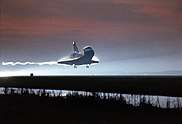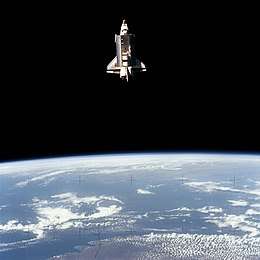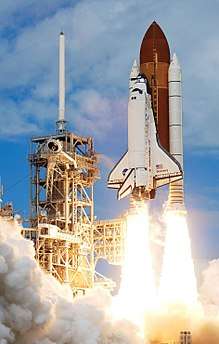Shuttle pallet satellite
The shuttle pallet satellite was a satellite bus designed to be deployed and then retrieved for return to Earth on NASA's Space Shuttle. It carried a variety of payloads both scientific and military in nature.
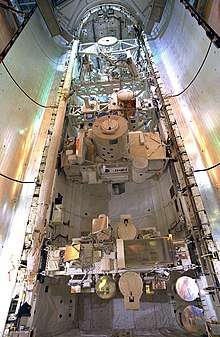
It was made by Messerschmitt-Bölkow-Blohm and first flew in 1983. It was carried for the first time during the STS-7 mission and called SPAS-01 carrying 10 payloads[1]. It flew again on the STS-39 mission in 1991 called IBSS-SPAS(Infrared Background Signature Survey - Shuttle Palette Satellite) for the DOD testing various ballistic missile detection sensors[2].
SPAS flew for the third time with the STS-51 mission in 1991 called ORFEUS-SPAS (Orbiting & Retrievable Far & Extreme UV Spectrometer - Shuttle Palette Satellite) with ultraviolet instruments. ORFEUS-SPAS was flown again on the STS-80 mission[3].
SPAS was flown for the second to last time with the CRISTA-SPAS (Cryogenic Infrared Spectrometers & Telescopes for the Atmosphere - Shuttle Palette Satellite) payload on STS-66 in 1994 mounting several infrared sensors looking at the Earths atmosphere, and that payload flew again on STS-85 in 1997[4] .
Gallery
 ORFEUS-SPAS II after being deployed from Columbia on STS-80
ORFEUS-SPAS II after being deployed from Columbia on STS-80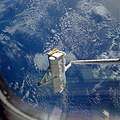 The first SPAS on the RMS of Challenger during the STS-7 mission
The first SPAS on the RMS of Challenger during the STS-7 mission IBSS-SPAS after being deployed from Discovery's payload bay during the STS-39 mission
IBSS-SPAS after being deployed from Discovery's payload bay during the STS-39 mission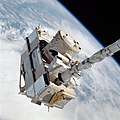 CRISTA-SPAS 1 on Atlantis' RMS before release on the STS-66 mission
CRISTA-SPAS 1 on Atlantis' RMS before release on the STS-66 mission
References
- "SPAS 01". space.skyrocket.de. Retrieved 2018-11-09.
- "IBSS-SPAS". space.skyrocket.de. Retrieved 2018-11-09.
- "ORFEUS-SPAS 1, 2". space.skyrocket.de. Retrieved 2018-11-09.
- "CRISTA-SPAS 1, 2". space.skyrocket.de. Retrieved 2018-11-09.
